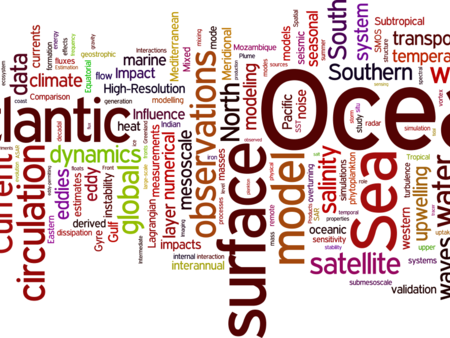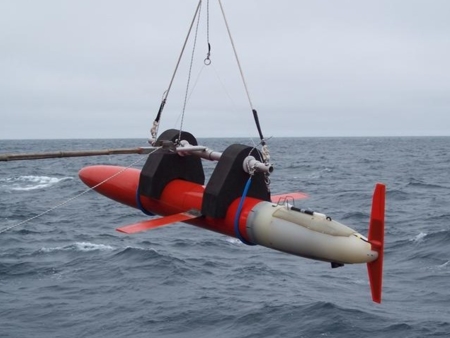Satellite altimeters map wave heights with a "doughnut" footprint
A new interpretation for 50 years of data
The new study published in the Journal of Geophysical Resarch - Oceans, overturns 50 years of practice in the analysis and understanding of radar altimeters. The design and interpretation of satellite altimeters goes back to the 1970s: a radar shines a narrow beam of microwaves on the surface, and records the reflection of the radar pulses a few microseconds later after the radar pulse has made a round trip to the ocean surface and back to the radar. The actual measurement is a recording of the radar power as a function of time. This power rises around an "epoch" that can be translated into a mean sea surface height (SSH), and the duration of the rising time gives a sense of the distribution of the surface elevation around the mean, which is generally translated into a "significant wave height" (SWH). The theory behind this interpretation of altimeter data relies on the assumption that the "sea state" (the statistical description of waves) is spatially uniform at the scale of the radar beam.
All was nice and well when looking at SSH and SWH variations at scales of hundreds of kilometer along the satellite track. Yet, satellite data is typically averaged over 7 km. So, what is in the smaller scale fluctuations? Noise? What is the actual resolution limit of altimeters? One extreme case of small scale fluctuations is this schematic view of wave groups (series of high waves followed by lower waves) and its mapping by a satellite altimeter. In that schematic the groups are long compared to the effective footprint diameter ρc , and the altimeters reports a SWH that varies from 0.1 to 1.6 times the true significant wave height Hs. But what happens when groups get shorter?
Looking at wave heights in storms, we already found that the variability of SWH was mainly explained by 2 parameters: the mean value of SWH, which is the true significant wave height Hs, and a "peakedness" parameter Qkk that can be estimated from the wave spectrum (De Carlo et al. 2023), and this is all because the wave heights vary across the satellite footprint. The China-France Ocean Satellite (CFOSAT) has a very particular altimeter beam: because it flies much lower than other altimeters (530 km compared to 1350 km for Jason 3) its footprint is smaller and more sensitive to small scale fluctuations, it is also unique in combining a classical altimeter measurement with a measurement of the wave spectrum.
Doughnuts and humps
In order to understand the measurement of altimeters it is best to simulate how they work. Starting from a map of the surface elevation, we can see that the wave heights are irregular with some larger waves in the middle of smaller waves, as visualized with a map of local wave heights Hl. Given a detailed knowledge of the radar processing, we have shown that the usual processing is equivalent to averaging the wave height over a "doughnut"-shaped footprint: the estimation of wave height is most sensitive to waves at a distance ρC/2 from the footprint center, with ρC given by the square root fo twice the satellite altitude times the significant wave height.
The processing of simulated data clearly shows that this new "doughnut" theory explains most of the variability of wave heights in noise-free radar data. The wave groups also lead to errors on the estimate of the sea level, explaining the mysterious "hump" in spectra of along-track altimeter data, and the limit of the spatial resolution of traditional instruments (LRM altimeters such as Jason).
This new understanding of the role of wave groups in the satellite measurement opens new perspectives for a better processing of past, existing and future satellite instruments.







